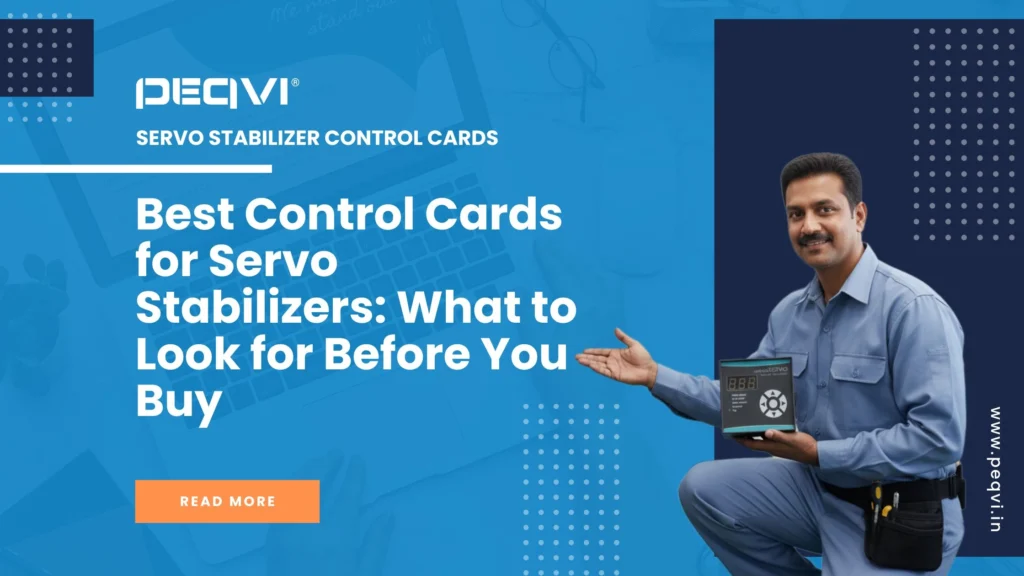Choosing the right control card is one of the most important steps when selecting a servo voltage stabilizer. The control card decides how fast the stabilizer reacts, how stable the output is, and how safe your appliances remain during bad power conditions. A good card gives smooth correction and long life. A weak card can cause frequent failures and poor performance.

Before buying a servo stabilizer or replacing a control card, it is important to know what features and qualities really matter. This helps you avoid low grade products and choose something that performs well for years.
1. Fast and Accurate Voltage Sensing
A good control card must sense voltage quickly and with accuracy. Slow sensing causes delay in correction. This creates output swings during fluctuations. Digital cards with high quality sensing circuits usually give the most stable output.
2. Strong Protection Features
Protection is a key part of any control card. Make sure it has the following:
- High and low voltage cutoff
- Overload and short circuit protection
- Surge and spike safety
- Phase reversal and missing phase protection in three phase units
These protections keep both the stabilizer and your appliances safe.
3. Reliable PCB Quality
Quality of the PCB tells you how long the card will last. Look for:
- Thick copper tracks
- Clean layout
- Good clearance
- Solid soldering
- Branded components
A weak PCB fails early due to heat, moisture, or bad joints.
4. Use of Microcontroller Based Design
Modern microcontroller based cards perform better than old analog designs. They process voltage changes faster, offer better accuracy, support more features, and show fewer errors. They also allow manufacturers to update firmware when needed.
5. Smooth Motor Control
The card should run the servo motor smoothly without jerks. Smooth motor control reduces wear and tear of gears and increases the life of the stabilizer. Some cards use algorithms that avoid unnecessary movement and settle quickly on the correct output.
6. Display and User Features
A good control card usually gives useful display information such as input voltage, output voltage, mode, and delay status. Some advanced cards also provide fault logs, buzzer indicators, and smart restart features.
These features help the user easily understand what is happening inside the stabilizer.
7. Serviceability and Spare Availability
Before buying, check if the control card has easy spare availability. Cards made by reliable Indian brands usually have good support and local service options. Avoid designs that depend on rare components or imported chips that are hard to replace.
Conclusion
A servo stabilizer performs only as well as the control card inside it. By choosing a card with strong sensing, good protection, reliable PCB quality, and smooth motor operation, you can ensure long term performance and safety. The right control card not only improves output stability but also increases the overall life of the stabilizer.

